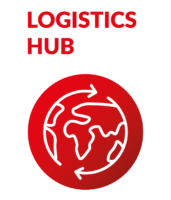Empowering the Fresh Produce Chain: Enhancing Efficiency and Transparency with GS1 Standards
Producers and sellers of fresh produce – farmers, growers, and retailers – need and want to share more and more information, from farm to fork. To do this as efficiently and effectively as possible, it is necessary to standardize the capturing and sharing of information ‘upstream’ in the chain. This will make information such as origins and locations available. With GS1 standards we can help you out.
Enable farm to fork
It all starts with identification of products and locations
You need a unique GS1 Global Trade Item Number (GTIN) to sell your product anywhere in the world, whether online or in a physical shop. To track your products throughout the supply chain on their product journey from farm to fork, you uniquely identify your company, branch, agricultural plot, or orchard with a GS1 Global Location Number (GLN) that you record in the GLN registry, optionally together with sustainability information such as transport, CO2 impact, and certificates.
Transforming tomorrow starts today
GS1’s QR code: the all-in-one code
GS1’s QR code can contain more information than the barcode. Think of a web address, inventory information, recipe, expiry date, serial number and batch number. This allows retailers to make processes more efficient and sustainable (e.g. reduce food waste through dynamic pricing), suppliers can communicate directly with consumers (interaction after sales) and consumers can access real-time information, such as allergen information, recipes, promotions, and reviews. One scan, infinite possibilities!
We present to you – A new, data-driven system to track produce shipments
In addition, on February 9, GS1 Netherlands will present a pilot together with Stack&Track in the logistics hub from 10:00-10:30. This project due to start in the Netherlands in early 2024 aims to establish a digital platform that can track returnable transport items wherever they are in the world. We hear from the project leaders about how their use of data and standards can achieve more efficient and transparent supply chains.

